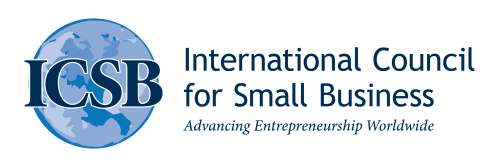The world’s small businesses are facing an unprecedented challenge. For Micro-, Small-, and Medium-sized Enterprises (MSMEs) – which represent over 90% of firms globally – uncertainty is no longer a temporary disruption. It has become the defining feature of doing business in 2025.
From geopolitical volatility and inflationary shocks to digital transformation pressures and fragile supply chains, MSMEs are operating in a complex risk landscape with limited resources and constrained access to support. A new report from the International Council for Small Business reveals just how precarious this situation has become – and what can be done about it. Read the article
The Numbers Tell the Story
MSMEs are the backbone of the global economy. In Poland, for example, these enterprises generate 49% of business-sector value added and employ 65% of the workforce – figures that mirror trends worldwide. Yet despite their outsized economic impact, MSMEs remain uniquely vulnerable.
The productivity gap is stark. Polish MSMEs are only half as productive as their large-company counterparts, falling below the 60% benchmark seen in other advanced economies. According to McKinsey analysis, closing this gap could unlock value equivalent to 6.5% of GDP – highlighting both the challenge and the enormous opportunity.
Five Structural Barriers Holding MSMEs Back
The report identifies critical constraints that prevent small businesses from building resilience:
1. Financial Fragility
MSMEs operate with minimal financial reserves, making them particularly vulnerable during downturns. In the UK alone, there’s a $114 billion lending gap in bank financing to SMEs. In emerging markets, the situation is even more dire – the credit gap for MSMEs was estimated at $5.7 trillion in 2019, equivalent to 19% of their combined GDP.
2. Credit Access Challenges
Financial institutions frequently categorize MSMEs as high-risk borrowers, leading to stringent lending criteria and elevated interest rates. This creates a vicious cycle where small businesses that most need capital to build resilience are least able to access it.
3. Limited Strategic Planning Capacity
Resource constraints mean MSMEs often lack sophisticated risk assessment tools and long-term strategic planning capabilities. They’re less likely to engage in formal contingency planning, increasing their exposure during crises.
4. The Digital Divide
Digital technology adoption among MSMEs is hindered by financial constraints, skill shortages, and inadequate infrastructure. This digital gap reduces their ability to pivot operations or access alternative markets during disruptions.
5. Regulatory Complexity
MSMEs struggle with complex, fragmented regulatory environments – a challenge that intensifies during periods of economic policy uncertainty. Compliance costs and bureaucratic burdens disproportionately impact smaller firms.
The AI Opportunity – And the Risk of Being Left Behind
Artificial Intelligence adoption is emerging as a critical factor in operational resilience, but the gap between large and small firms is widening. Leading countries like South Korea, Denmark, and Sweden report AI adoption rates exceeding 25% among enterprises, with some innovation hubs surpassing 30%.
The contrast with lagging regions is sobering. In Poland, only 13.9% of industrial enterprises with 10-49 employees use AI, compared to 42.3% of large firms. Among Polish MSMEs that have adopted AI, nearly half cite productivity gains and 46% note improved production efficiency – yet workforce benefits remain limited.
Some countries are bridging this divide through targeted support. Singapore, for example, supports AI adoption among SMEs through subsidies, grants, and low-interest loans designed to lower entry costs and mitigate adoption risks.
Policy Solutions: Five Priorities for Building MSME Resilience
The report outlines a comprehensive strategy for supporting MSMEs in uncertain times:
1. Simplify Regulatory Frameworks Reduce compliance burdens and improve ease of doing business. Poland’s 2025 deregulation bill offers a model – introducing over 40 measures including a six-month grace period for new obligations and a “one in, one out” rule for regulations.
2. Close the Credit Gap Deploy well-designed financial instruments and digitally enabled lending tools. This includes guarantee schemes, public-private credit platforms, and fintech solutions like digital credit scoring and peer-to-peer lending.
3. Accelerate Digital and AI Access Provide targeted support and infrastructure investment to help MSMEs adopt digital technologies. Countries leading in this space combine robust AI infrastructure with skilled workforce development and supportive regulatory environments.
4. Embed MSMEs in Risk Planning Include small businesses in national risk preparedness and economic continuity planning. MSMEs shouldn’t be afterthoughts in crisis response – they should be central to resilience strategies.
5. Strengthen Institutional Coordination Ensure support measures are agile, scalable, and responsive to evolving challenges through better coordination across institutions and levels of government.
From Crisis Response to Growth Strategy
The report’s central argument is compelling: investing in MSME resilience isn’t just about crisis response – it’s a foundational strategy for inclusive and sustainable economic growth. As uncertainty becomes the new normal, the countries and regions that prioritize small business support will be best positioned for long-term prosperity.
The window for action is narrowing. With global economic policy uncertainty reaching new highs and MSMEs facing mounting pressures, policymakers need to act decisively. The framework exists – what’s needed now is the political will to implement it.
For the millions of entrepreneurs and small business owners navigating these uncertain waters, the message is clear: you’re not alone, and with the right support systems in place, uncertainty doesn’t have to mean instability. It can become a catalyst for innovation, adaptation, and growth.


